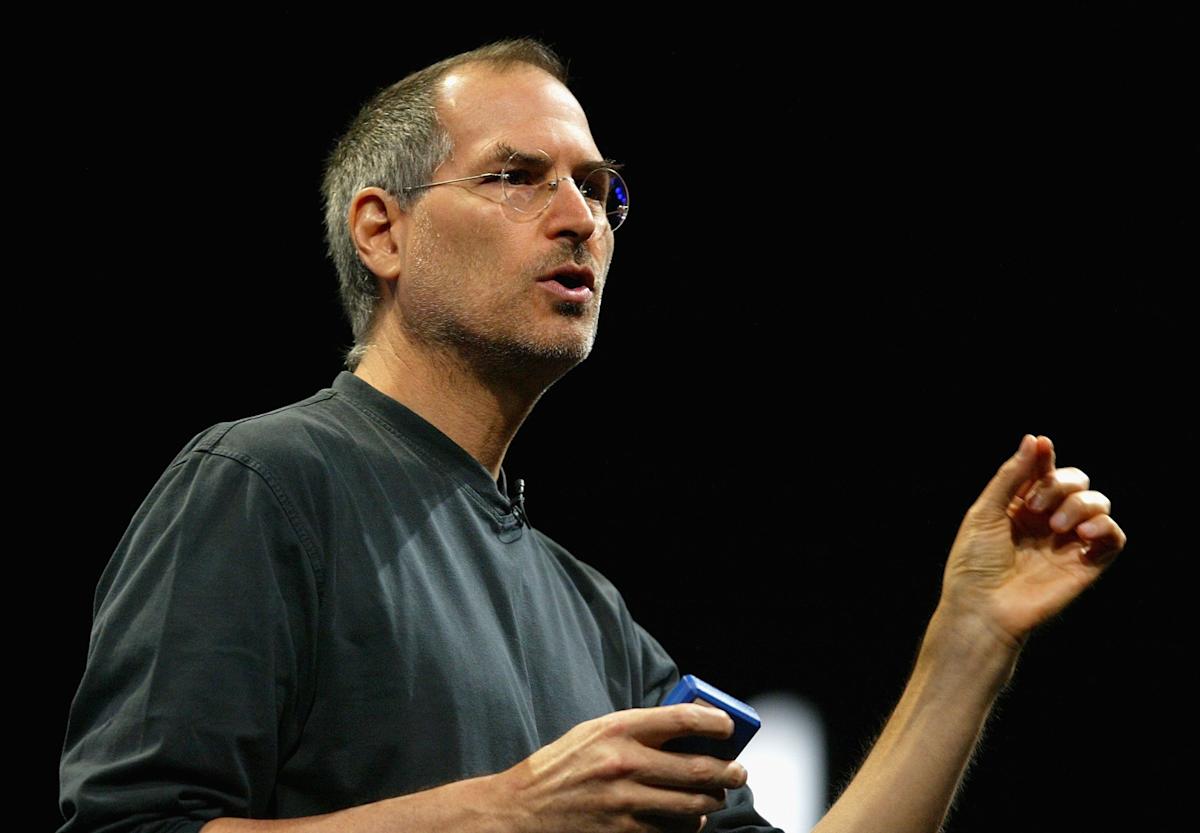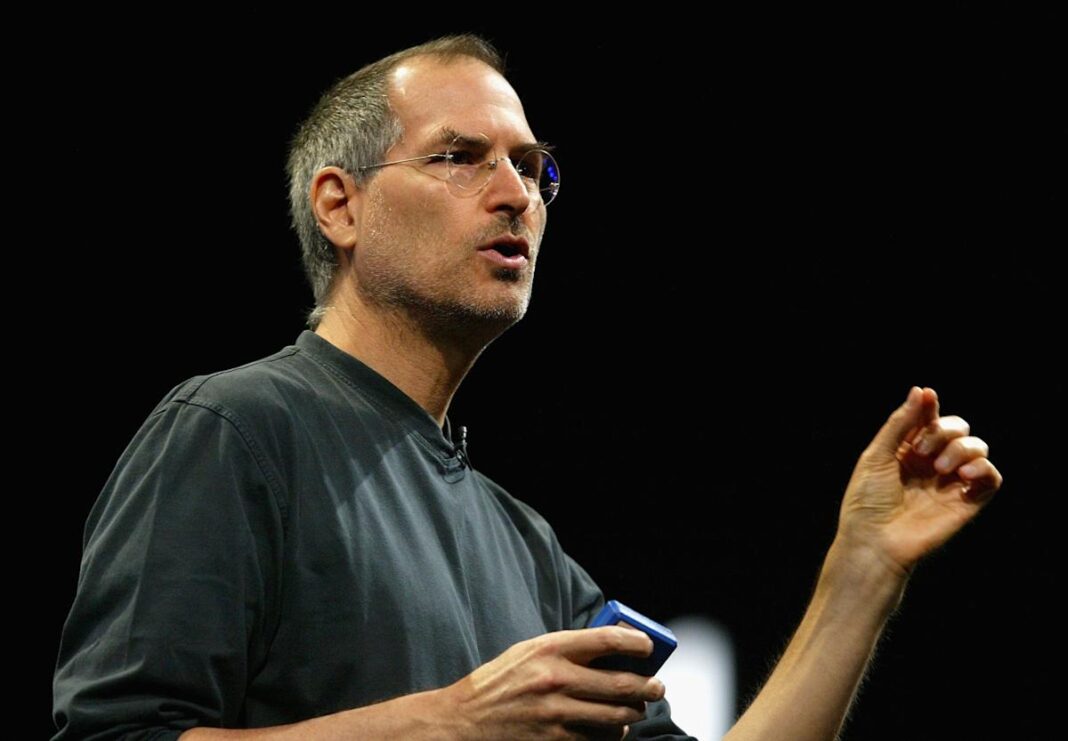“The Unorthodox Leader: How Steve Jobs Drove Apple Through the 2008 Financial Crisis and Emerged Stronger” In the midst of one of the darkest economic downturns in modern history, the world was bracing for the worst. The 2008 financial crisis had left a trail of destruction, with iconic companies forced to make impossible choices between survival and sacrifice. But amidst the chaos, Steve Jobs, the visionary co-founder of Apple, defied convention. Rather than succumbing to the pressure to slash jobs and budgets, Jobs took a bold stance, choosing to invest his way through the downturn. And it was this unorthodox approach that would ultimately pave the way for one of the most revolutionary products of the decade – the iPad. Two years later, Apple would emerge from the ashes, a phoenix-like, and forever change the way we interact with technology. Join us as we delve into the fascinating story of how Steve Jobs navigated the treacherous waters of the
Risk-Taking in Uncertain Times

When the 2008 financial crisis hit, many businesses were forced to slash jobs and budgets to stay afloat. However, Apple’s Steve Jobs took a different approach. Instead of cutting costs, he chose to “invest our way through the downturn,” as he told Fortune in 2008. This calculated risk-taking paid off, as just two years later, Apple released the iconic iPad. This move not only helped Apple stay ahead of its competitors but also demonstrated the importance of taking calculated risks in uncertain times.
According to the Harvard Business Review, just 9% of companies flourish after an economic slowdown. However, those that make smart investments during downturns have a better chance of becoming leaders in their market. This is because investing in research and development (R&D) allows companies to stay ahead of the curve and capitalize on emerging trends and technologies.

Strategic Investment
So, how can businesses identify opportunities for strategic investment? The key is to focus on areas that will drive growth and innovation. For Apple, this meant increasing its R&D budget to stay ahead of its competitors. By doing so, the company was able to develop new products and technologies that would propel it forward when the economy recovered.
Other businesses can follow Apple’s lead by identifying areas of strategic investment that align with their goals and values. This might involve investing in emerging technologies, expanding into new markets, or developing new products and services.
Short-Term vs. Long-Term Thinking
When faced with economic uncertainty, it’s tempting for businesses to prioritize short-term gains over long-term strategic planning. However, this approach can have serious consequences. By focusing on short-term profits, businesses may be sacrificing their long-term sustainability and competitiveness.
As Steve Jobs demonstrated, investing in R&D and taking calculated risks can pay off in the long run. By prioritizing long-term strategic planning, businesses can stay ahead of the curve and capitalize on emerging trends and technologies.
Risk Management
Of course, taking calculated risks and investing in R&D involves some level of risk. However, there are techniques that businesses can use to mitigate these risks and maintain a stable business during economic downturns.
- Diversification: By diversifying their products, services, and markets, businesses can reduce their reliance on any one area and minimize their exposure to risk.
- Cost management: Implementing cost-saving measures, such as streamlining operations and reducing waste, can help businesses stay afloat during economic downturns.
- Scenario planning: By developing scenarios for different economic outcomes, businesses can prepare for potential risks and opportunities and make informed decisions.
Adaptability and Resilience
Business leaders must be adaptable and resilient to navigate economic uncertainty. This means being able to adjust to changing market conditions, capitalize on emerging trends and technologies, and maintain a positive outlook even in the face of adversity.
Steve Jobs was a master of adaptability and resilience, as demonstrated by Apple’s ability to navigate the dot-com bust and the 2008 financial crisis. By prioritizing R&D and taking calculated risks, Jobs was able to position Apple for long-term success, even in the face of economic uncertainty.
Innovation and Adaptation
So, how can businesses stay ahead of the curve and capitalize on emerging trends and technologies? The key is to prioritize innovation and adaptation. This might involve investing in R&D, developing new products and services, and expanding into new markets.
By staying adaptable and resilient, businesses can navigate economic uncertainty and emerge stronger and more competitive on the other side.
Challenges for Apple and the Tech Industry
Despite its success, Apple is not immune to the challenges facing the tech industry. The ongoing trade war with China, global supply chain risks, and economic uncertainty all pose significant threats to the company’s business.
According to Wedbush, Apple produces some 90% of iPhones, 75%-80% of iPads, and over 50% of Macs in China. This makes the company highly vulnerable to disruptions in the global supply chain.
The Impact of Trade Wars
The ongoing trade war with China has significant implications for Apple and the tech industry as a whole. The increase in tariffs on Chinese goods to 125% poses a major threat to Apple’s business, particularly given its reliance on Chinese manufacturing.
As the trade war continues to escalate, businesses must be prepared to adapt and adjust to changing market conditions. This might involve diversifying their supply chains, investing in emerging technologies, and developing new products and services.
Conclusion
Conclusion: Lessons from Steve Jobs’ Unconventional Approach to the 2008 Financial Crisis
In the face of the 2008 financial crisis, Apple’s Steve Jobs defied conventional wisdom by choosing to invest his way through the downturn, rather than resorting to the usual cost-cutting measures. The results were nothing short of remarkable, with the iconic iPad launching just two years later, revolutionizing the tech industry and cementing Apple’s position as a leader in innovation. As our article has highlighted, Jobs’ approach paid off in a big way, demonstrating the power of long-term thinking and strategic investment in times of uncertainty.
The significance of Jobs’ approach cannot be overstated. By choosing to invest in his company’s future, rather than sacrificing short-term gains, Jobs demonstrated a commitment to innovation and growth that has inspired countless entrepreneurs and business leaders. His success serves as a powerful reminder that, in times of crisis, courage and vision are often more important than cost-cutting and belt-tightening. Furthermore, Jobs’ approach highlights the importance of investing in research and development, talent acquisition, and strategic partnerships – all of which are critical components of a successful business strategy.
As we look to the future, the lessons from Jobs’ unconventional approach to the 2008 financial crisis remain more relevant than ever. In an era of increasing uncertainty and disruption, businesses must be prepared to think differently and take bold risks in order to stay ahead of the curve. As Jobs himself once said, “The people who are crazy enough to think they can change the world are the ones who do.” By embracing this mindset and investing in their own futures, businesses can unlock new levels of innovation, growth, and success – and emerge stronger and more resilient than ever before. And that’s the ultimate legacy of Steve Jobs’ enduring vision for Apple – a testament to the power of innovation and the importance of never losing sight of the future.
